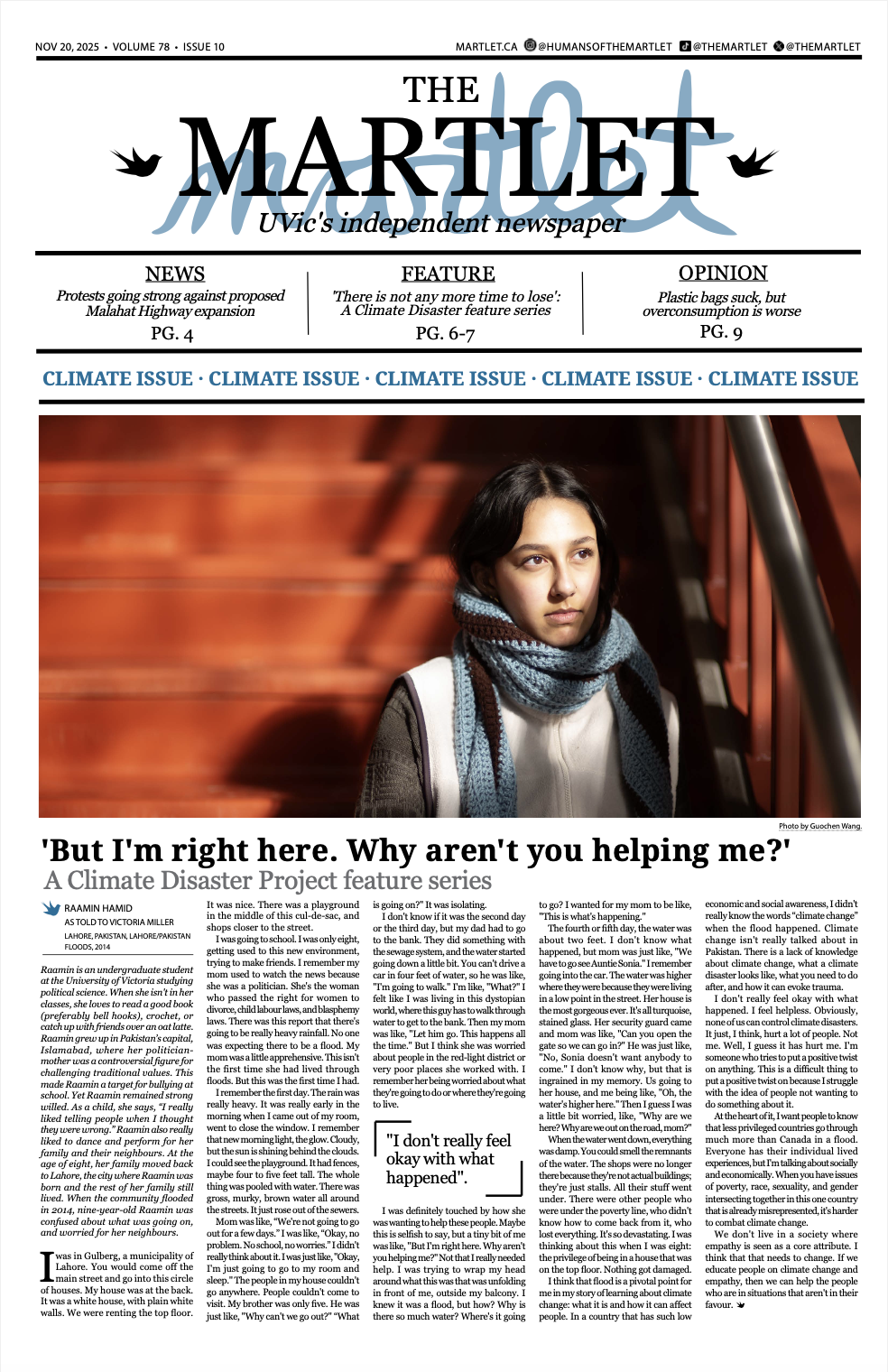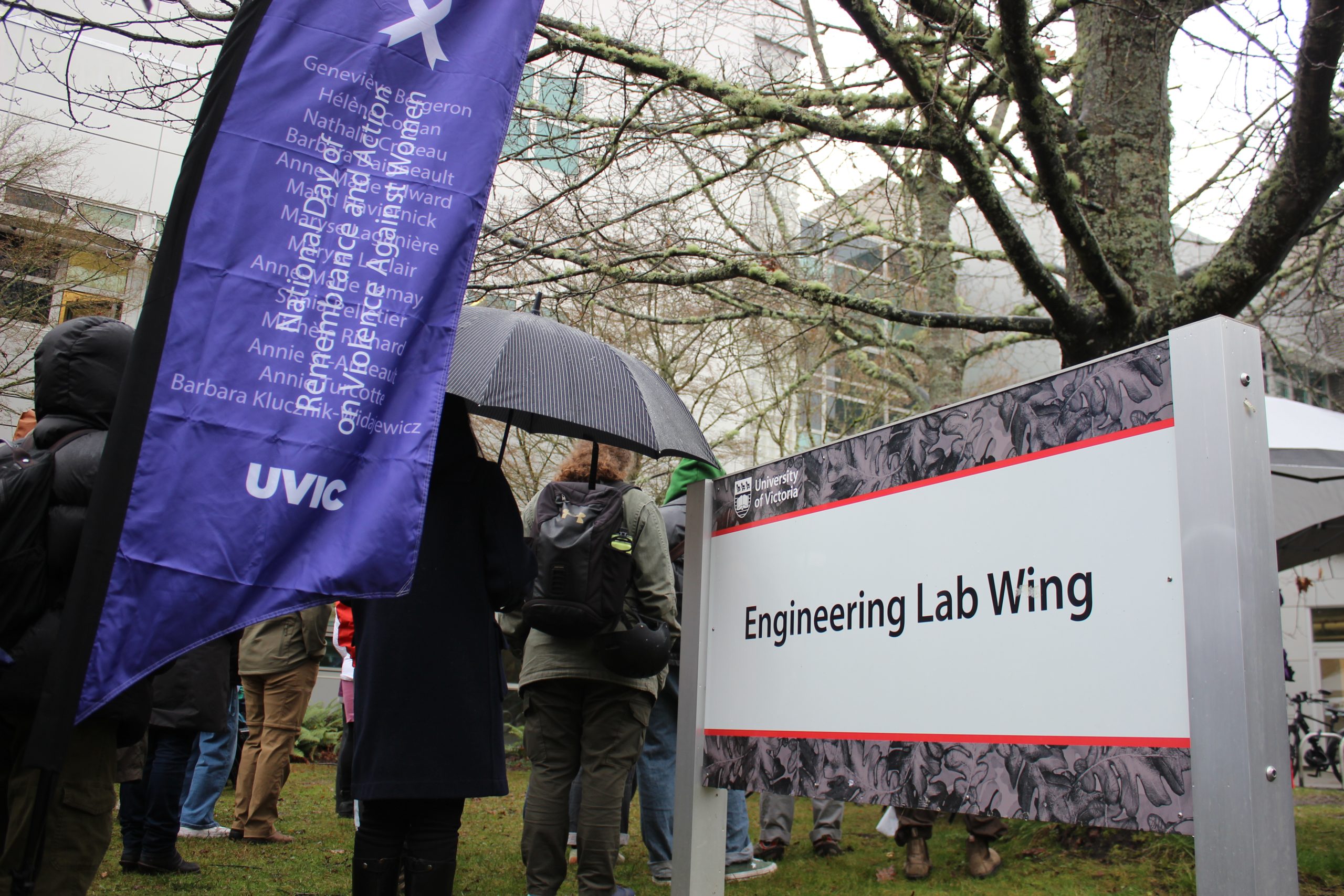Profit-chasing is harming our post-secondary institutions in the long run

Illustration by Sage Blackwell.
In Canada, public universities and colleges are not supposed to be for-profit. Instead, subsidized by provincial and federal governments, they are intended to be institutions that allow their citizens to get affordable education. However, with the increasing budget cuts due to an overreliance on international student tuition, it is clear that their operational model is, at best, highly flawed.
At worst it has become a for-profit business model.
The Ontario 2024 budget estimated that Ontario colleges “will lose approximately 3.1 billion dollars over the next two years.” In B.C., colleges and universities announced layoffs and course reductions as early as November 2024 due to budget deficits. Camosun College projected a deficit of at least $5 million, UBC Okanagan a deficit of $16 million, and UVic cut its budget by $13 million, to name a few. All of these institutions cited the decline in international student enrollment as the primary cause for budget cuts.
Funding for post-secondary education in Canada comes from public funding from the federal and provincial governments, student tuition and fees, as well as private donations and contracts. Despite this, post-secondary institutions have operated less like public educational institutions and more like profit-driven enterprises for years.
Erynne Grant, Labour Relations Officer for the Canadian Union of Public Employees (CUPE) 2081, argues that the “current funding structure has forced colleges and universities to overly rely on international student tuition to support core operations.”
I believe that if post-secondary administrators had not operated with profit in mind, like they are supposed to do, this situation would have played differently.
In Canada, International student tuition is five times that of their domestic counterparts, and many institutions have built entire programs, services, and infrastructure under the premise that international enrolment would remain steady or grow indefinitely. But this is not only naive thinking, it is poor administration.
In this environment, students are treated as revenue streams rather than as learners. This affects the quality of education. Let’s not forget that the point of education is to create good and productive citizens, to enable them to learn and discover, and to further our knowledge in all aspects of the human experience. Post-secondary education was never supposed to be a mere credential that you exchange for a mediocre job. This unsustainable capitalist approach incentivizes administrators to neglect fundamental issues, such as adequate funding, equitable tuition models, and responsible financial planning in favour of chasing ever-higher gains for the top administrators.
Prime Minister Justin Trudeau received a salary of $406 200 in 2024 — a figure lower than many presidents of Canadian universities. Kevin Hall (UVic) received a salary of $464 377 in 2024, Meric Gertler (University of Toronto) received a salary of $486 192 in 2023, Vivek Goel (Waterloo) received a salary of $494 223 in 2023, and Benoit-Antoine Bacon (UBC) earned $515 000 in 2024. It boggles my mind, personally, that the president of a publicly funded, not-for-profit institution receives a higher salary than the leader of a nation does.
Beyond the administration issues of specific schools, Canada is no longer the desirable destination for international students that it once was. Issues such as rising tuition fees, a lack of affordable housing, and deteriorating services like student mental health services and healthcare, have changed the world’s image of Canadian post-secondary education. While diploma mills and private institutions have taken advantage of this situation for years, the truth is publicly funded institutions did so as well.
Post-secondary education in Canada needs a systemic shift to be sustainable. Instead of building a business on unreliable and precarious revenue streams, institutions need to prioritize long-term sustainability by pressuring both provincial and federal governments for proper investment, as well as by diversifying other funding sources where possible. Most importantly, they must not forget that their priority is to deliver high-quality education with equitable access to students.
If the post-secondary operational model does not change, the primary affectees will be local students and staff. As international students seek out new countries in which to pursue their education, Canadian students will have to cover the deficit, meaning that tuition fees will rise and many people may face layoffs. Both of these outcomes will hinder access to the fundamental right to education.
Canada must not allow this to occur. If it does, it will face an increasingly less prepared and educated workforce, and its talented individuals might seek better educational opportunities abroad — just like the international students we have long over-relied upon used to do.
To ensure the sustainability of Canada’s post-secondary education system, institutions and governments must return to their core mission and ensure that equitable, high-quality education remains a public good for all their citizens, not just a privilege for some.








